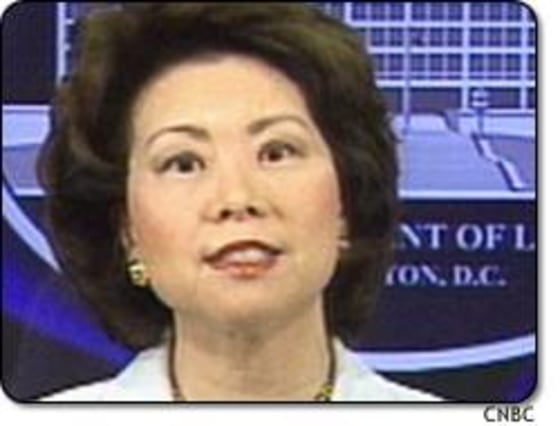Just as the economy is beginning to show signs of life, along comes yet another dispiriting employment report. The steady loss of jobs, including nearly 1 million since the recession technically ended in late 2001, is causing concern even among many optimistic economists.
“It raises a yellow flag,” said Gerald Cohen, senior economist at Merrill Lynch. “You’ve got to see job growth to have a healthy, sustainable recovery.”
The August employment report brought a bitter conclusion to a week of generally encouraging economic news that propelled stock market indices to their highest levels in more than a year. Two closely watched business surveys showed growing activity in the manufacturing and service sectors, auto sales hit their highest level in nearly two years and the Federal Reserve reported anecdotal signs of improvement in many parts of the country.
Many forecasters thought the economy was at last poised to break a streak that has seen it shed jobs for seven straight months and 26 of the past 32. Instead companies slashed another 93,000 jobs from their payrolls, the worst performance since March, according to the government’s survey of business establishments, considered the most reliable indicator of the labor market’s health.
Bill Cheney, chief economist of John Hancock Financial Services, called the report “just awful.”
“If there is a silver lining somewhere in this gloomy employment picture, it’s hard to find,” he said. The slight decline in the nation’s unemployment rate, to 6.1 percent from 6.2 percent, was dismissed as statistically meaningless even by the Labor Department agency that produced the report. The power blackout in the Northeast and Midwest was unlikely to have affected either of the monthly surveys, government analysts said.
Cheney said the continued weakness “suggests that we may be further than we thought from a truly sustainable economic recovery.”
“It’s just one month’s data, and I still lean towards believing that spending by consumers, government and businesses adds up to enough to generate a self-sustaining cycle of income gains and job creation,” he said in a note. “But it’s definitely cause for concern about the outlook.”
A massive federal tax cut and record-low interest rates have fueled growing demand for big-ticket items among both businesses and consumers. Strong sales data have forced many analysts to raise their projections for overall economic growth in the current quarter to 5 percent or more, which could make it the strongest period since the height of the dot-com boom in 1999.
But the growth has been generated almost entirely by rising productivity as business executives, stung by a deep profit recession and scandal over accounting methods, have chosen to boost their earnings by cutting costs to the bone.
“I think corporations are just being very conservative, waiting to see very convincing proof of growth,” said Ethan Harris, chief economist at Lehman Bros. “That convincing proof of growth has just arrived in the past few weeks.”
Even though the economy has been growing for seven straight quarters, the growth has been extremely weak compared with past expansions. “We’re talking about strong growth now, but we’re not talking about a recovery that over the past two years has been very strong,” said Ed McKelvey, senior economist at Goldman Sachs.
Still, most economists would have expected to see some job growth by now, or at least smaller job losses.
“It defies all reason and logic,” said Mark Vitner, senior economist at Wachovia Securities. “The only conclusion I can come to from that is that the jobs data must be wrong.”
He explains that the government consistently overcounts large employers and undercounts the small businesses that tend to provide most job growth in the early stages of the economy. And he is convinced that when the government publishes revised employment data in June 2004, it will show that the economy actually has been adding jobs all this time.
“In every recovery we have ever had, without exception, numbers have been revised up,” Vitner said. “I don’t think we’ve seen a boom in hiring by any means, but I do think we have probably seen modest job gains.”
Other analysts disagreed, pointing out that other measures of employment also have been weak, including surveys by the Institute for Supply Management and weekly claims for unemployment benefits.
“I’m friends with Mark and I respect him, but this is the seventh straight month of decline, averaging almost 100,000 jobs a month,” said Stuart Hoffman, chief economist at PNC Financial. “I guess I’d have to say I’m not sure I can explain away 100,000 jobs a month for seven straight months as purely measurement error.”
With other parts of the economy on the mend, economists believe the Federal Reserve will hold a key short-term interest rate steady at a 45-year low of 1 percent when it meets on Sept. 16. If the job market doesn’t turn around, however, analysts don’t rule out a Fed rate reduction down the road.
The Associated Press contributed to this report.
